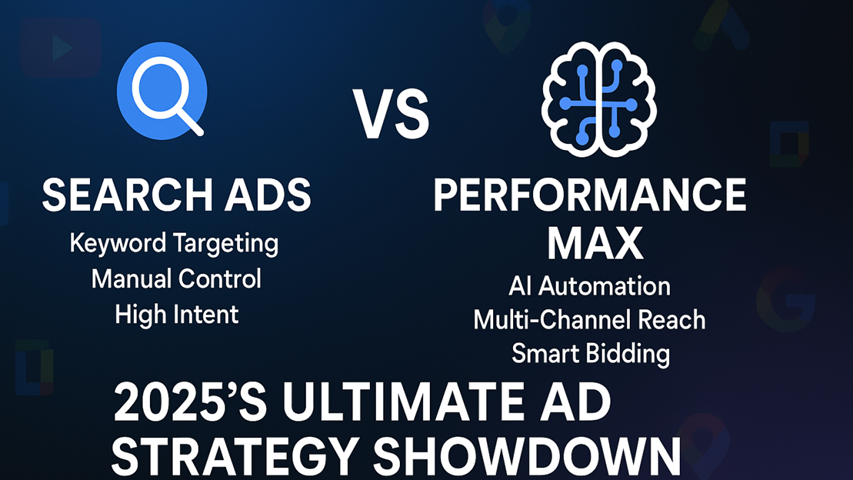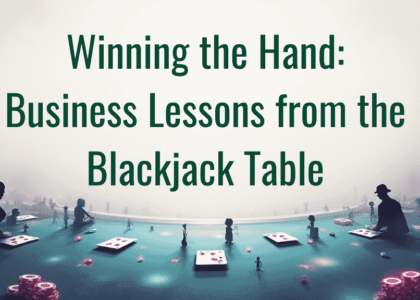If you’re in digital marketing, you’ve probably heard the phrase “Performance Max” more times than you can count—especially if you’re working with brands that want to dominate in competitive markets like Google ads partner in Dubai But let’s be real: just hearing the buzzwords doesn’t make your campaigns better. In fact, in my own experience tinkering with Google’s latest ad tech, the difference between “good” and “great” Performance Max campaigns comes down to expertise, experimentation, and a dash of street smarts.
I’m writing this after a week of deep-dive meetings with our Admoon team, poring over client data from both Iran and the UAE. Performance Max has been the talk of every strategy call. Why? Because it’s changed the game—again.
Why Performance Max Matters in 2025 (and Why It’s Not Just Hype)
I remember back in 2021, when Google first launched Performance Max (PMAX). Marketers were skeptical. Some called it a “black box” because you’re handing over a ton of control to Google’s AI. But here’s what’s wild: by 2025, Performance Max isn’t just another campaign type. It’s the strategy that’s moving the needle for businesses who want to squeeze every last drop out of their ad budgets.
Performance Max lets you run ads across all of Google’s channels—Search, Display, YouTube, Discover, Gmail, Maps—with one campaign. It’s a bit like handing the keys to your best salesperson and saying, “Go wherever you think you’ll close the deal.” You set the conversion goals, provide creative assets, and Google’s machine learning finds the best way to hit those targets.
But don’t be fooled. Just because it’s “automated” doesn’t mean it’s hands-off. In fact, I’ve learned (sometimes the hard way) that agencies who just “set and forget” PMAX get left in the dust.
The Human Touch Behind Machine Learning
Maybe it’s just me, but every time Google launches a new ad product, I get a little nervous—and a little excited. There’s always that learning curve. Early on, I made the rookie mistake of trusting the AI too much. One of our travel-industry clients watched their budget disappear on irrelevant placements (“Why are we showing up next to cat videos?!”).
Lesson learned. The smartest agencies—especially those in fast-moving markets like Dubai—know that Performance Max is only as good as the data, strategy, and creative you feed it. That’s why at Admoon, we don’t just launch campaigns and hope for the best. We obsess over:
- Feeding PMAX with high-quality, conversion-focused creative assets (not just random images and headlines)
- Segmenting audiences with first-party data (your own CRM is a goldmine—use it!)
- Setting up robust conversion tracking (if you’re not measuring real sales or leads, you’re flying blind)
- Regularly reviewing asset performance—then ruthlessly swapping out what doesn’t work
And you know what? Real results don’t happen overnight. But when you hit that sweet spot, it’s like finding a cheat code for digital marketing.
Real Talk: The Results We’ve Seen (and the Mistakes We’ve Made)
I’ll never forget a recent campaign we ran for a regional fintech startup. We’d seen so many “case studies” online, but nothing felt specific to our market or audience. So, we rolled up our sleeves, set up a PMAX campaign with custom video creatives (shot in their own office—no stock footage), and fed Google their actual customer list for targeting.
For the first week? Not much. CPA was high, conversions were trickling in. I could feel the client’s anxiety through every email.
But—after two weeks of asset testing, swapping in new copy, and adjusting audience signals, the campaign took off. By the end of the month, we’d doubled their conversion rate and cut cost per lead by 35%. It wasn’t magic. It was messy, hands-on optimization.
And yes, sometimes things still go sideways. We once had a client who tried to buy adwords account credentials from a dodgy provider, thinking it’d shortcut the process. Their account got flagged, suspended, and we had to spend two weeks untangling the mess with Google support. Shortcuts? Usually not worth it.
What’s Actually New in Performance Max for 2025?
If you haven’t checked out the latest PMAX updates, you’re missing a trick. Google is pushing the envelope with:
- Better reporting: You can finally see placement insights and asset group performance. No more “black box” excuses.
- AI-powered creative suggestions: Google now suggests new headlines, descriptions, and even images. I’m not always a fan of their suggestions, but sometimes the results surprise me.
- Profit optimization: Not just conversion count, but actual revenue impact. For e-commerce, this is a game-changer.
- Integration with offline conversions: If you’re in brick-and-mortar, this means you can track online-to-offline sales, which is huge for automotive, retail, and services.
But the biggest shift? Agencies who really get PMAX are blending automation with human creativity. That’s the secret sauce.
How Smart Agencies Turn Automation Into Conversions
You might be wondering: “So, what’s the difference between a smart agency and an average one?” In my book, it’s all about:
- Custom data feeds: Feeding your PMAX campaign with real-time inventory, pricing, or product updates. I’ve seen this double ROAS for e-commerce brands.
- Layered audience signals: Using in-market, affinity, custom list—sometimes even uploading Lookalike lists from your CRM. More signals = better targeting.
- Creative testing on steroids: Agencies that produce a ton of creative assets, then let Google’s AI sort out the winners, always come out on top. (We recently launched 30 headline variants for a single client. Results? Three top-performers drove 80% of conversions.)
- Relentless optimization: There’s no “set it and forget it.” The best teams check PMAX asset reports weekly (heck, sometimes daily if the budget’s big).
And let’s not forget crisis management. If you’ve ever had a google ads account suspension recovery moment, you know how stressful that can be. The right agency isn’t just about launching campaigns—they’re your lifeline when things go wrong. At Admoon, we’ve helped dozens of clients reactivate suspended accounts (often after they tried risky tactics elsewhere).
Trends Shaping Performance Max in 2025
If you’re still on the fence, here are some trends (and a few predictions) I’m seeing this year:
- Privacy-first targeting is the new norm. With cookies fading away, first-party data and server-side tagging are must-haves.
- Video assets are king. Short-form, vertical, UGC-style videos are crushing it on YouTube and Discover placements.
- International scaling is easier than ever. If you’re in a market like Dubai, PMAX lets you test new countries with minimal friction.
- AI-generated creatives are getting better, but still need a human touch. Don’t sleep on copywriting—Google’s suggestions can be bland.
Honestly, I’m having more fun running campaigns now than ever—there’s this constant challenge to outsmart the algorithms, and when you get it right, it’s incredibly satisfying.
Ready to Win With Performance Max? Let’s Talk
If you’ve made it this far, thanks for hanging in! Performance Max is a beast, but it’s not unbeatable. It takes skill, creativity, and a willingness to get your hands dirty. Whether you’re battling for market share in Google Ads Dubai or just looking for a fresh start after an account suspension, the right strategy—and the right partner—can make all the difference.
At Admoon, we live and breathe Google Ads. From google ads account suspension recovery to building powerhouse Performance Max campaigns, our team’s seen it all (and fixed it all). If you want to stop guessing and start growing, let’s chat. Your next big win could be just one smart campaign away.






